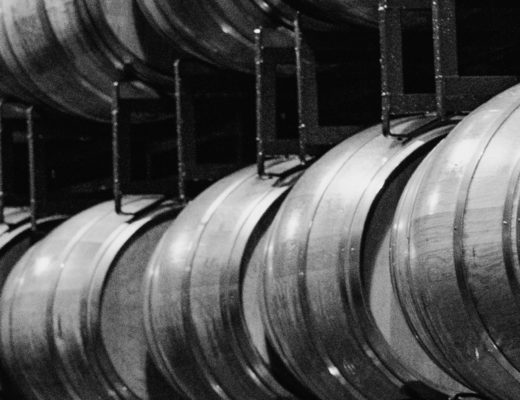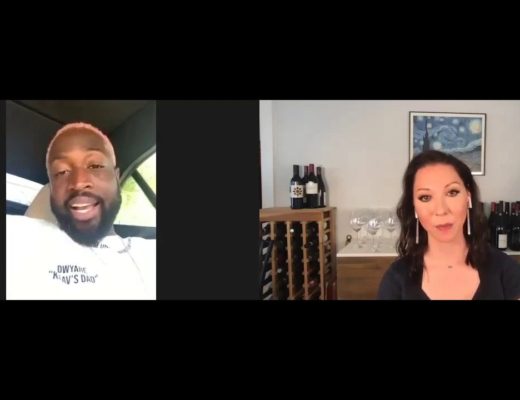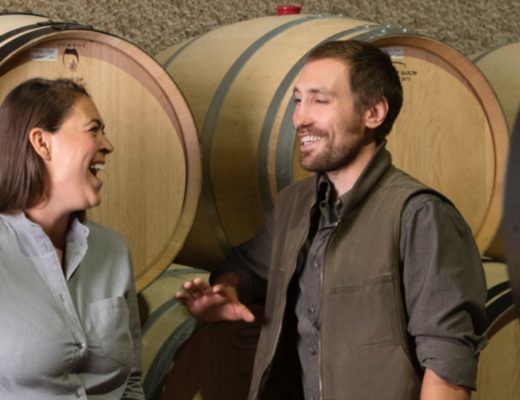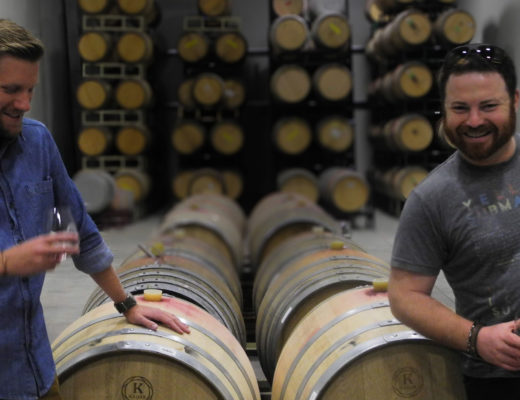Silver Oak is the quintessential American wine, and Wine Access Members have shouted it from the mountaintops: From 4th of July to Thanksgiving, this American classic belongs on the table. Each and every allocation we’re secured, from Silver Oak flagship magnums to Twomey Cellars Sauvignon Blanc, Merlot, and more have sold-out in record time.
In celebration of Independence Day, we sat down with Matt Duncan, the third generation at the helm of Silver Oak’s legacy, to talk wine, America, Napa Valley, and how things are (deliciously) changing.
Wine Access: How did you get into wine?
Matt Duncan: Wine was a natural career for me. I grew up around the business, as my father started working in the Napa Valley in the early ‘70s for Robert Mondavi and my family has been here virtually my entire life with a quick 5-year jaunt to Southern California where my father worked for San Antonio Winery. I have always felt very comfortable in vineyards and wineries, probably the way that other people from farming families feel when they are on the home ranch.
WA: How has the California wine industry changed?
MD: There is so much talent pouring into the California wine business all the time, I think the quality bar in all the regions in which we operate keeps getting higher and higher. In competitive set tastings, there are very rarely any dogs these days. That also means things are much more competitive, and the costs associated with grapegrowing and winemaking are reflective of that fact. Anything less than world-class just doesn’t cut it.
WA: Looking back, is there anything you would have done differently?
MD: Not much. I suppose I would have loved to do a few more overseas vintages. The one that I spent in New Zealand was a transformative time both personally and professionally. Once I returned to the US, I was a grad student, engaged to be married, and focused on starting a career and family. I had always dreamt of doing a harvest in Africa.
WA: On any given weeknight, what are you most likely to be drinking?
MD: It depends on the season and the food on the table, but more often than not, something light and refreshing. Whites or rosés from all over the world, sometimes Pinot Noirs.
WA: What wines inspire you?
MD: Quite honestly, they almost all do! Once I experienced all the hard work, love, and attention that goes into making each and every bottle of wine from just about any source, it’s hard to dismiss any of them. That said, some are more profound and thought-provoking than others, but I can appreciate them all.
WA: How has your approach to winemaking changed over the years?
MD: I think all young winemakers go through a phase where they hold the reins really tight, before eventually realizing that they can’t control as much as they’d like. There are so many variables that aren’t up to you, and your job is to make the best decisions you can at each moment with usually incomplete information. I like to say we’re in the “educated guess” business….our job is to make the most informed and educated guess we can, but it’s still just that: a guess.
WA: What’s the most bizarre thing someone has ever said to you about your wine?
MD: It wasn’t really about the wine, but I once had someone interview for a seasonal harvest position ask me what time of year we harvested the grapes….needless to say, I didn’t think they had the requisite knowledge for the job.
WA: What brings you the most joy?
MD: Watching our grape-growing and winemaking teams work together, cover each others’ backs, and achieve lofty stretch goals.
WA: What’s the craziest thing that’s ever happened to you during harvest?
MD: I don’t recall the exact vintage, but I was once making wine in a very remote place at the end of the power transmission lines. One day, we lost a leg of the 3-phase power (think of it as riding on the Autobahn in a car with 3 donut spare tires on it), so we could only operate a few electrical things at once. This pump or this press, but not both, for example. We were pumping tanks over, but had to turn off the lights to conserve enough power to run the pumps, and it was after sunset. So, we pulled a bunch of cars into the winery and were pumping tanks over with headlights supplying the ability to see (and exhaust fumes making us light-headed).
WA: If you could make wine from any other region in the world, where would you go?
MD: Brunello di Montalcino is something I have a passion for, and have always wanted to visit and perhaps participate.
WA: What’s the #1 thing you want all wine drinkers to remember?
MD: First, that it’s an agricultural product. Sometimes, the connection back to the land & farming gets lost in the beautiful settings in which we make the wine. The grapegrowing facet is hard work, messy, and absolutely critical to the quality of the bottle on your table. Second, that wine is meant to be enjoyed with family and friends. We want you to create memories around the bottles that you drink, and while certain wines will be so evocative as to do that on their own, usually it is the setting and the people that you will remember just as much as the wine itself.
WA: What wine in the Wine Access store would you like to drink right now?
MD: Tough choice. I have loved the Unico from Vega Sicilia in the past, so that is very tempting, but of course, Poggio Antico Brunello is right up my alley. Maybe a little young still, so I suppose I would lean towards the 2006 Unico.





